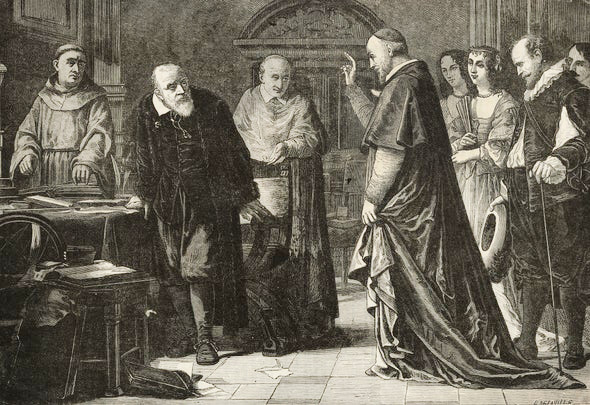galileo's studies of cicadas
Many have asked this summer, how cicadas are able to produce such loud noises? What many do not realize is that in asking the question, we are following in the footsteps of one of the greatest scientists of all time. The scientist was Galileo Galilei and his question about cicada sounds played a key role in his dealings with the Catholic Church, especially in his attempts to win the good graces of Pope Urban VIII. More importantly, the results of the cicada episode challenged commonly held beliefs about science and religion.
In 1623, just before the publication of one of Galileo’s most important books “The Assayer,” his good friend, Cardinal Maffeo Barberini, was elected Pope Urban VIII. Galileo immediately halted the printing process in Rome in order to dedicate the book to him, rather than the Medici family, to whom he had dedicated his previous book. Cardinal Barberini was a lavish sponsor of the arts and sciences and as Pope, he sponsored some of the best artists and painters. Galileo was fully aware of this since he had previously been the object of the Cardinal’s praises. Now, he also wanted to benefit from the Cardinal’s promotion to the top of the Church’s hierarchy. In Galileo’s words, this was “a marvelous conjuncture,” because he could have his conviction that the Earth moved around the sun and not the other way around, approved by the Pope himself. Or so he thought.
In his book, Galileo wrote one of the most famous quotes in the history of science, that “the book of nature is written in the language of mathematics.” Yet, the excerpt that the Pope liked the most was not about mathematics, but about cicadas. In a wonderful display of literary skill, Galileo carefully planned the book to culminate with a story about cicadas that became known in the Vatican as “the fable of sound.”
Galileo spoke of a man endowed with extraordinary curiosity who, at night heard many sounds outside his house. He went out and discovered how different birds and insects produced the sounds, until he found a cicada. Unlike other animals, the man could not find an obvious explanation for the cicada’s noise. He dissected the insect with a needle, but ended up sinking the needle too deeply into the insect, killing the cicada without learning the answer. The moral of the story for Galileo was that some natural phenomena have explanations that had not yet been learned.
Since the most powerful man in the Catholic Church admired Galileo and his science, why then, did Pope Urban VIII end up condemning Galileo for his theory that the Earth orbited the sun? The problem was that the Pope read the fable of the cicada in a different way. For Galileo the metaphor opened the path for him to argue in favor of the motion of the Earth, but it did not go as planned. The Pope interpreted the story as showing that it is impossible to know the real causes of things. Ultimately, Urban VIII condemned Galileo for creating an unfounded conflict between science and religion that endures to this day.
Today, we know that cicadas sing with internal membranes called tymbals and that the Earth indeed revolves around the sun, just as Galileo claimed. It should also be pointed out that, as was true in Urban VIII’s time, there are still countless things that we do not know. What is truly remarkable is how the song of the cicada led two men, one of science and the other of faith, to draw such different conclusions about the world.





